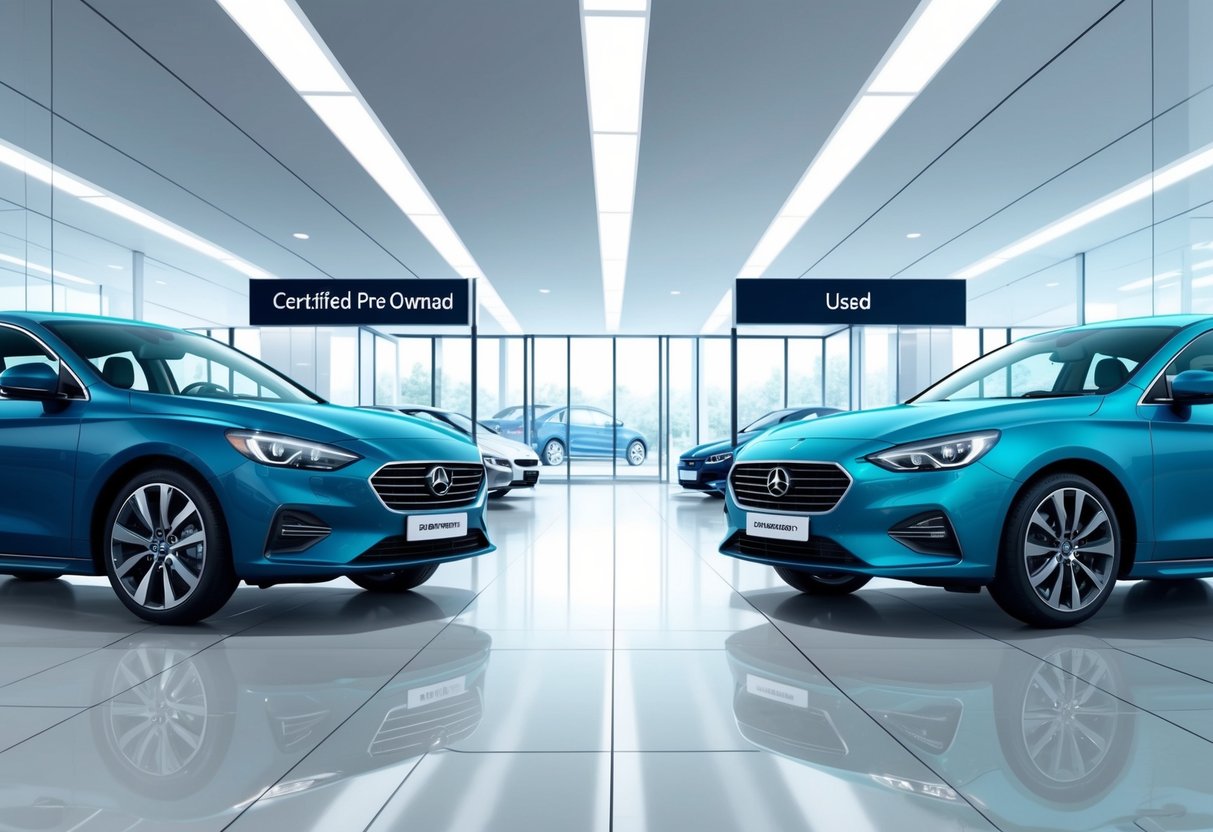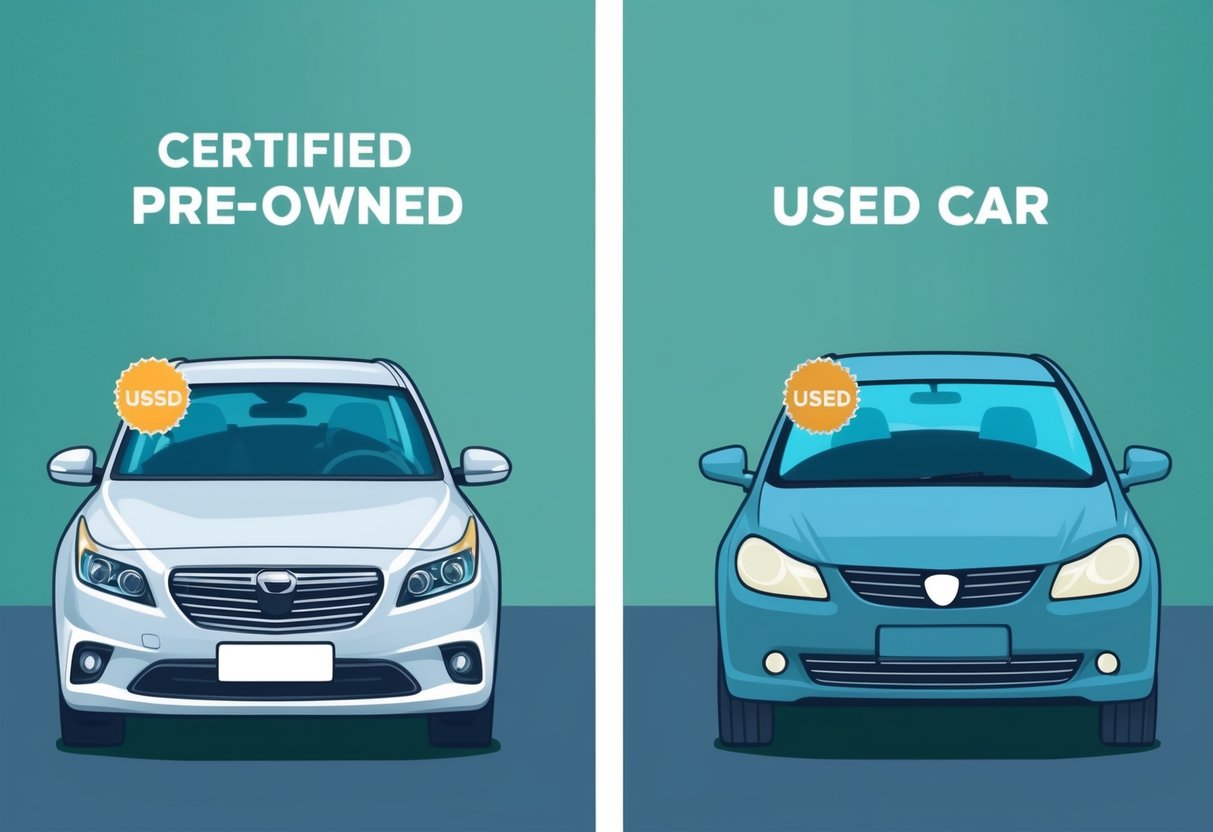
Warranty Coverage Comparison
The type and scope of warranty coverage can greatly impact both initial peace of mind and long-term repair costs when buying a car.
Certified pre-owned (CPO) vehicles and typical used cars differ in key areas, especially in terms of manufacturer-backed protection and extended warranty options.
Manufacturer’s Warranty in CPO Cars
Certified pre-owned vehicles usually come with strong warranty coverage that is backed directly by the original car manufacturer.
After a comprehensive inspection, most CPO vehicles receive either a fresh limited warranty, or the existing new-car warranty is extended.
This means buyers get coverage for parts and labor on many mechanical issues for at least one or two years beyond what’s left on the original policy.
Common CPO program benefits include coverage up to 72 months or 100,000 miles from the original in-service date.
In addition to powertrain warranty coverage (typically for engine and transmission), some brands also give limited bumper-to-bumper policies.
Buyers often get extras like roadside assistance and rental car reimbursement.
This approach offers a safety net nearly similar to buying new, without the higher price tag.
See more about CPO warranty programs on Kelley Blue Book and Edmunds.
Warranty Options for Used Cars
Non-CPO used cars are usually sold “as-is,” meaning there’s no manufacturer’s warranty left or included by default.
Unless a balance of the original warranty is still valid due to age or mileage, used car buyers are generally responsible for repairs from day one.
If any warranty remains, it may not be transferable or may have only a few months or thousands of miles left.
Independent dealers sometimes offer short-term dealer warranties, but these are brief and vary widely in scope and value.
Coverage can range from 30 days to a few months and usually has mileage limits.
Carefully reading the specifics is crucial, since coverage for major systems is not guaranteed.
For more details on differences between used and CPO warranty protection, visit US News.
Extended Warranty Considerations
Extended warranties, often called extended service contracts, appeal to buyers seeking extra peace of mind for both CPO and traditional used cars.
These plans are purchased separately and can be offered by car manufacturers or third-party companies.
Coverage differs, but most include major components such as engines, transmissions, and sometimes electronics.
For CPO vehicles, extended warranties can begin after the included CPO warranty ends, stacking an extra layer of protection.
Standard used car buyers may use these contracts to supplement any remaining coverage or add warranty coverage to otherwise “as-is” vehicles.
Terms, deductibles, and repair location restrictions should be reviewed carefully.
Some contracts may require buyers to use specific repair facilities or cover only certain repairs.
Learning more about extended warranty pros and cons can help guide a smart decision; guidance is available on US News.
Affordability and Cost Savings

Certified pre-owned and used cars each offer unique advantages for buyers who prioritize affordability and cost savings.
These choices differ greatly in their initial pricing, long-term value, and ongoing ownership expenses, which are important for shoppers wanting to save money when purchasing a vehicle.
Upfront Price Differences
The most immediate difference lies in purchase price.
Used cars almost always have a lower sticker price than certified pre-owned (CPO) vehicles.
A non-certified used car is typically the cheapest option available, making it attractive to buyers with strict budgets or those looking for basic transportation.
CPO cars, on the other hand, are priced higher due to their extra inspections, warranties, and factory support.
They appeal to shoppers who want added reassurance while still saving compared to a new car.
For example, those comparing the two will notice that used models provide the lowest price point and historically depreciate at a slower rate after purchase.
A buyer considering an affordable option will be able to afford a newer model or a higher trim level by selecting a used car over a CPO vehicle.
Potential to Save Money
The opportunity to save money when buying a car depends on more than just the sticker price.
Used car buyers often save the most upfront and can stretch their budget for greater features, especially if they are open to higher mileage.
Dealers may also be more flexible when negotiating used car prices.
CPO vehicles offer an alternative form of savings by providing perks like extended warranties and a recent maintenance history.
This can mean a lower chance of unexpected expenses in the short term.
CPO options present substantial cost savings compared to new cars while still giving peace of mind over standard used cars.
Those looking for the absolute lowest cost should consider the total value of the features, warranty, and long-term savings versus just the upfront price.
Total Cost of Ownership
Total cost of ownership goes beyond the car’s initial price and includes ongoing expenses like insurance, taxes, repairs, and depreciation.
Used cars usually have significantly lower insurance premiums compared to CPO vehicles due to their reduced market value.
Maintenance costs tend to be slightly higher for used cars, as they may lack warranties and could require repairs sooner than CPO models.
Many buyers find peace of mind with a CPO vehicle’s extended warranty coverage, helping prevent out-of-pocket repair costs in the early years of ownership.
CPO cars often include additional perks such as roadside assistance or complimentary maintenance for a limited time.
Depreciation is another key factor.
Both used and CPO cars depreciate less rapidly than new vehicles, so buyers avoid the steep initial loss in value.